18 - 48 Months+
Kindergarten ready: You may be closer than you think

“We need to find a balance between academic expectations and the developmental needs of kids.”
Sarah Chesworth, Early childhood educator
The human brain has about 100 billion nerve cells, all of which are present at birth, but have few links between them. Those links are formed by experiences children have. The idea that the right inputs can strengthen a brain’s architecture informs much of the product design at Lovevery. But there’s lots of debate around how early we should start laying the foundation for academic learning.
Jessica Rolph, your host, welcomes Sarah Chesworth to today’s episode of The Perspective Series, to help us navigate Kindergarten prep in the baby and toddler years. Sarah is a former Kindergarten teacher and early childhood educator.
Key Takeaways:
[1:43] How does Sarah explain the debate between academic and play-based learning for 2 and 3 year olds?
[2:46] Should we be exposing our 2, 3, or 4 year olds to any academic skills?
[3:25] What are some categories of concepts that Sarah feels like children need to have to be ready for Kindergarten?
[4:48] What are some ways that math and spatial understanding can show up in play?
[6:29] Sarah talks about the distinction between healthy brain development in early childhood and the role that academics play.
[9:23] What early number skills might Sarah look for in children entering Kindergarten?
[10:48] What are some ways that parents can build empathy skills?
[12:04] Sarah speaks about the development of fine motor skills.
[13:00 ] Sarah describes the space she created for her daughter and the ways that she’s incorporated play and academics.
[15:01] Sarah extends her advice to parents: Listen, read, play, sing, and snuggle.
Mentioned in this episode:
Learn more about Sarah Chesworth.
Transcript:
Academic & play based learning for toddlers
Jessica: Hello, Sarah.
Sarah: Hi, Jessica. Thank you so much for having me.
Jessica: It’s great to have you, I’d love to get right into it, so how do you explain the debate between academic and play-based learning for 2 and 3-year-olds?
Sarah: So I think the first thing that we have to get into is that I don’t think that the two things are mutually exclusive. Play is learning, and I think that we really need to find a balance between academic expectations and then the developmental needs of kids. We’ve gotta look at children as a whole, and there are going to be kids that maybe are ready for some of the exposure to academic content before others, and that’s okay. I think that we really have to think about where that child is in their development and then base our play and learning expectations depending on where they are.
Jessica: And so studies show that children who participate in academic-based preschool programs score higher than their peers in standardized tests in kindergarten, but then that gap is closed for most by the end of kindergarten and for all of the gap by the end of first grade. So is there any reason to expose our 2, 3, 4-year-olds to any academic skills? Talk to me more about this balance.
Sarah: So I think that we get really bent out of shape on, oh, we need to do the alphabet, we need to do the numbers, we need to do all of these things, and in reality, kids are going to naturally be exposed to that through books and conversations that you’re having and play and just things that are going to naturally come up, I don’t think that it has to be this, “Alright, we’re going to sit down right now and do reading time.” Books can be part of everything that you do.
Getting ready for kindergarten
Jessica: And so what are some categories of concepts that you feel like children need to have to be ready for kindergarten? Can we get specific?
Early literacy skills
Sarah: Sure, so let’s kind of start with maybe some of the early literacy skills. I have a 2-year-old myself, and I’m that mom that labels everything, so her name is pretty much on any article of clothing, anything that she owns, and she sees that, and so naturally she started asking questions like, “What is that thing that’s on everything that I own?” And so I was like, “Oh, this is your name. I’m writing Elouise.” So now, it’s like she’s learning that, okay, these letters, but she doesn’t know that they’re called letters, but this represents something. And so I think that we have to remember, reading starts with reading, right? So the more that we read to our kids, they’re going to naturally want to know how to do the skill that I see all of the adults around me doing, and then they also have those positive feelings associated with reading. This is a special time that I get to sit with my mom and my dad and my family, and we get to look through this book and talk about things together, so naturally she’s going to want to do that because we’ve created such positive experiences around it, plus she understands that the people that are around her, this print means something to them.
Math and spatial skills
Jessica: And if we can talk about also, what are some ways that math and spatial understanding can show up in play?
Sarah: So, spatial reasoning or the ability to imagine things in 3D and how they relate to each other is so easy to bring into the play environment with things like blocks and puzzles. As kids are building towers and castles and houses and all of those types of things, they’re naturally experimenting with how these shapes fit together, and what happens when I build this tower and add another block and it falls? They’re doing all those things without us saying, “Hey, you’re learning a math concept right now.” They’re just naturally doing it. And I think when we step back and really look at their play from the perspective of learning and kindergarten readiness, they’re doing a lot of their skills on their own without us making this big deal of it. Of course, as a parent, if you can kind of attach some vocabulary to those situations, “Hey, I see you building a tower. That one’s taller than your other tower,” or “Wow, let’s count how many blocks are in this tower.” All of those things are going to be beneficial, but you’re not sitting down saying, “Okay, counting time, everybody.” You know, I think that we naturally as parents do that and we just don’t always realize that that’s what we’re doing.
Jessica: I think that there’s also something to be considered where there’s this distinction between academic learning, where you’re memorizing like you can recite the alphabet, recite a string of numbers in a row, versus actually building the architecture of the brain, really building their IQ.
Sarah: Absolutely.
Healthy brain development
Jessica: And IQ is a loaded word and so debatable, but can you talk to me about the distinction of healthy brain development in early childhood and where that academic playing… Does it play a role, or how does it play a role?
Sarah: So I can remember a situation in particular. When I taught kindergarten at the beginning of the year, we would have conferences with the incoming students and just kinda get a feel of where kids fell, how we might put reading groups together, things like that. And I had a child come in and their parent was really proud to tell me that they know the entire alphabet, I’m like, “Okay, great.” And the kid sang the ABCs to me, so in their eyes, that was knowing the entire alphabet. Well, this child who can sing the ABCs, that’s a memorized skill, right? And that’s how it starts. They knew the song that had the ABCs, but that child didn’t have any attachment to the letters, if that makes sense.
He was just singing the ABC song, but he didn’t have any concept of what the letters were, what they represented, he was missing that phonemic awareness piece, being able to attach these letters to these sounds to then be blended together to make words. So I think we really have to go back and really think about the language development that has to happen before we attach letters and letter sounds to language.
Skills children should have before kindergarten
Jessica: Yeah, that makes so much sense. I find the same with numeracy and understanding this concept of one-to-one correspondence is different from being able to recite numbers in order, or frankly out of order. I remember my children would oftentimes count, but count just random numbers, not necessarily in order, and they weren’t really… When they’re pointing their finger at the strawberries they were counting in the book, for example, they weren’t actually saying, “One,” and then pointing to that one strawberry and then saying, “Two,” and pointing to that second strawberry and then, “Three,” pointing to the third. They were just sort of doing the same motion, but not having it correlate to the numbers that were coming out of their mouth. So I’m really curious about how this evolves as well with numeracy. What kinds of skills are you looking for for children entering kindergarten around early number skills? Should they be able to count to a certain… Count to 20? What kind of concepts or academic skills should they really have?
Sarah: That’s such a great question. So I think the first thing that we have to do is just like you were saying, and I see the exact same thing with my two-year-old, there’s not that one-to-one correspondence. However, when I take a step back and I watch her play, just yesterday, she had set up her stuffed animal group and was having a tea party, and she gave every stuffed animal one plate and then on each plate she put a little slice of pretend cake and that’s one-to one correspondence, right? One object goes on my one plate, and then eventually they learn to count those things. So just like you said, I think we have to lay those foundational concepts. And then when they do approach kindergarten, they’ve got that foundation laid, so they’re ready to put that more academic piece on top of it, they’ve already had a chance to explore those concepts in a safe play environment.
Empathy
Jessica: Some experts now claim that one of the greatest predictors of lifelong success is not actually related to the alphabet or early numbers, but it’s actually about a child’s ability to control their impulses, like self-regulation skills.
Empathy plays a big part in play. So what are some ways that parents can build empathy skills?
Sarah: I think the most important thing you can do to build empathy is to read books. Books are such an amazing tool because we can literally walk with our child through things that we probably won’t experience with them, but they’ll experience at some point in their life. I think it’s really important to choose books that your child is able to relate to, but that have real pictures, real situations, they’re going to come across, books that feature diversity, children with disabilities and families that don’t look like them. And that way you’re, as a parent, able to walk through some of these things that they’re going to encounter in real life and help them talk through them. And kids can also see first-hand how situations might make the other person feel. And so they can also realize, when this happened to me, I felt sad, so if I did this to somebody else, they may feel sad. They’re just helping us have those conversations in a really authentic way without necessarily having the experience outside of the house yet.
Fine motor skills
Jessica: What about fine motor skills? So oftentimes, we find kids coming to school with their hands are not really ready to… They don’t have the muscle development to be able to write. Can you talk to this a little bit?
Sarah: Yes. So there is the pencil grasp, which is the thumb and first finger, which those are the muscles that are used to hold a pen or a pencil. Before kids ever hold a pen or a pencil, there are lots of other things that we can do to develop those muscles. One of the things I recommend and I do with my own daughter is just tearing paper. She loves to tear paper. Sometimes we’ll tear it and we’ll turn it into an art project, and other times we’ll just sit and tear paper because it’s fun and something to do, but that’s developing those same finger muscles. Using tweezers, picking up small objects, all of those things are going to really help set that foundation for writing.
Incorporating play and academics
Jessica: So you’ve given us some great examples already, but could you give us a little window into the space you’ve created for your youngest daughter and the ways that you’ve incorporated play and maybe a touch of academics to whatever extent you think that that’s relevant for her?
Sarah: Absolutely, so the biggest thing that we probably have in our learning environment that I am very adamant on is books. I try really hard to keep books fresh and new, so she’s always wanting to read and look through those books, and then also choose books that feature counting and maybe books that talk about the alphabet and books that have real life situations that she’s going to come in contact with one day, so books are a huge part of our learning environment. I also love having art materials and other things for sensory play. We do Play-Doh a lot. I like to make homemade Play-Doh because it lasts so much longer than anything in a can, and even just making that Play-Doh with her in itself is a learning experience.
We’re talking about the ingredients that go in the Play-Doh, we’re counting, we’re mixing. We’re using all of those math skills and science skills, and then once we have the Play-Doh, I’ll let her just kinda make whatever she wants to with it. I also have some mats that have numbers and letters on them, so if she wanted to roll the Play-Doh into snakes and make letters or numbers, that would be an option for her. I also have lots of open-ended materials, things like blocks, Legos, stuffed animals, we have a lot of the Lovevery Play Kits, so a lot of those materials are in our playroom as well, and just giving her those opportunities to practice those math skills, spatial reasoning, all of that kind of stuff with her blocks.
We also have a big variety of wooden puzzles that we’re practicing those critical thinking skills, and that’s a really easy place to put the alphabet in or put some numbers in if you’re trying to expose your child to more of those academic concepts, puzzles are a great thing.
5 things to do with your kids
Jessica: That’s great. Is there anything else that you want to share with parents of… Just about preschoolers, kind of late toddler years, as a kindergarten teacher, any last advice that you have for us parents?
Sarah: So I think when the pandemic hit, everybody kind of freaked out a little bit, right? Kids were out of school, our routines were kinda shaken up, people wanted to know, okay, what can I do to keep my child from falling behind? And I really sum it up with these five things, if you do these five things with your child, they are going to be fine. The first thing is talk to them. There’s nothing that replaces talking to your child, that language development is so crucial. It’s going to help develop vocabulary, all of that is so important. The second thing is to read. Reading starts with reading. Like I mentioned earlier, the more that you read, the more excited your child’s going to be about learning this skill that has such a positive feeling and attachment to it. The third thing is, of course, play. There is nothing that replaces play in those early years, and just giving your child opportunities to be a kid and not have to worry about being right or wrong or anything like that. Play is just… There’s just nothing that replaces play. The fourth thing on my list is sing. I think that so much language comes from songs and nursery rhymes and poetry, and I think we kind of forget about those things sometimes, so just remembering maybe things that you sang as a child or revisiting some of those nursery rhymes is going to be important, and then the last thing, of course, is snuggle, just being there with your child is the most important thing.
Jessica: That’s so beautiful, I love that. Thank you so much for being with us today.
Sarah: Absolutely, thank you so much for having me, I really appreciate it.
Learn more about how to provide enriching learning environments for your child on Lovevery’s blog, Here with you.
Posted in: 18 - 48 Months+, Problem Solving, Numbers, Literacy, Real World Play, Child Development
Keep reading

18 - 48 Months+
0 - 12 Months
Lovevery’s Disability Support Service offers personalized guidance
Lovevery’s mission is right in our name—we love every baby and child. Today I’m so proud to say that we’re further realizing that mission, by better serving more families. As you know, our Play Kits are staged by a child’s age. This works for many families, but I know firsthand that it’s not ideal for … Continued

12 - 48 Months
18 - 48 Months+
0 - 12 Months
8 ways to celebrate Earth Day as a family
Earth Day is a time to celebrate nature and the environment. Teach your children how to take care of the Earth with these fun activities, crafts, and books.

11 - 12 Months
13 - 15 Months
16 - 18 Months
18 - 48 Months+
Why children are so attached to their loveys (and what to do if your child loses theirs)
Loveys, also known as "transitional objects," help babies and toddlers through transitions. Learn why these blankies, stuffies, and more are important and what to do if one goes missing.
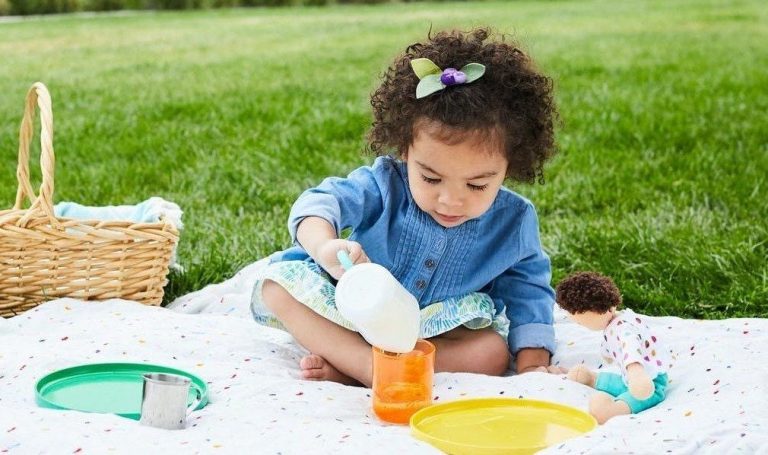
18 - 48 Months+
Pretend Play: Outdoor Picnics
Pretend play is a great way for your child to apply their current skills and use them for different purposes.
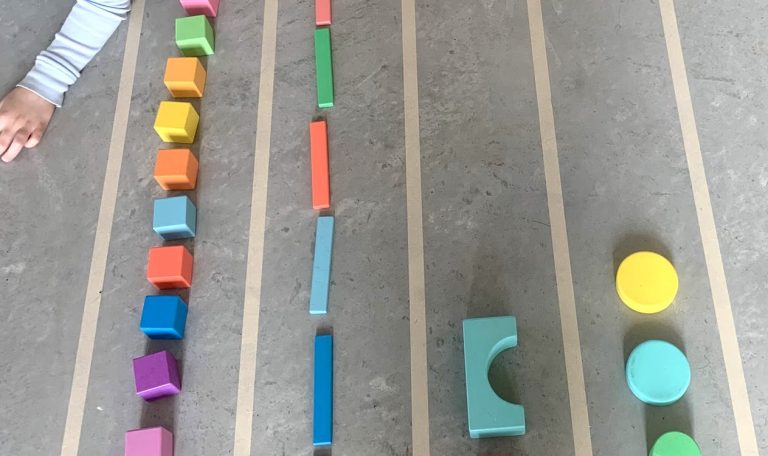
18 - 48 Months+
Making graphs with toys
Painter's tape and small toys can turn into a great pre-math activity for young kids who love to sort and compare.
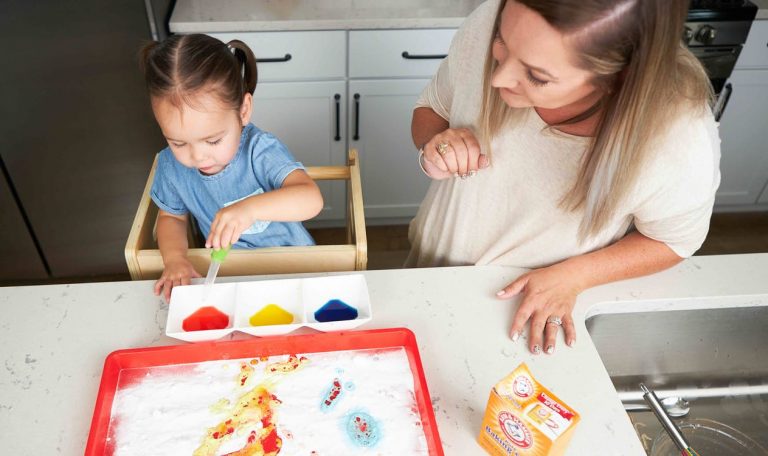
18 - 48 Months+
4 easy water dropper activities
Eye droppers are great for fine motor practice, precision, and focus, and can make an activity feel fresh and new.

18 - 48 Months+
Dot sticker play
Your child gets to work on their fine motor skills when your introduce versatile dot stickers.

18 - 48 Months+
Cracking eggs with your child
Cracking eggs takes a bit of training, but it's a great Montessori practical life activity you can begin around 3-years old.
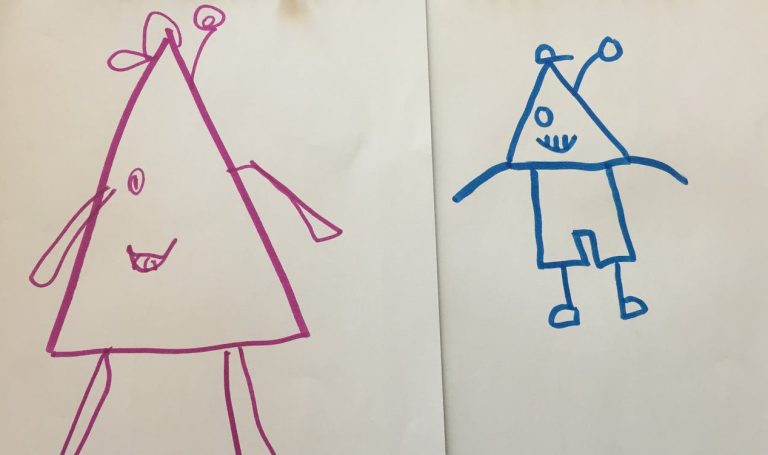
18 - 48 Months+
Copy that monster
This game is not only good for precise drawing practice, it's also an exercise in in using descriptive words.

18 - 48 Months+
3 fun ways to get the wiggles out
Kids need to run, jump, exercise, and work out the wiggles regularly. Try these 3 simple ways to get moving.
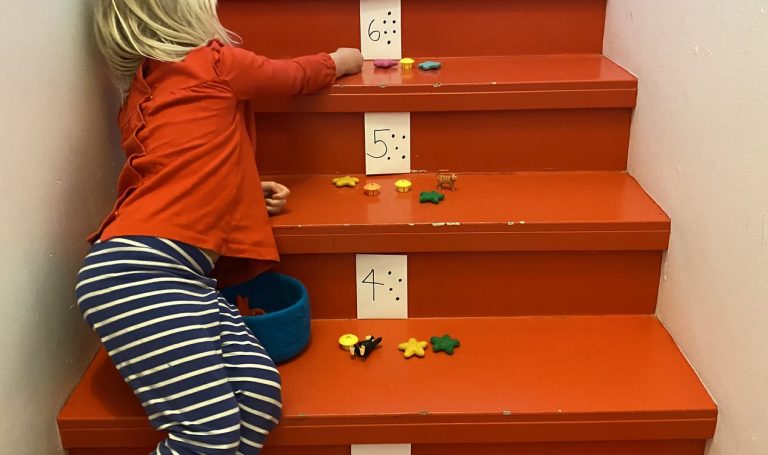
18 - 48 Months+
Stairway math
This activity gets the wiggles out while giving your child an opportunity to practice counting and identifying numbers.

18 - 48 Months+
Fine motor threading activity
This activity is a great way for your child to strenghen fine motor skills needed for precision in their grasp, manipulation, and release.

18 - 48 Months+
7 Best Quotes About Parenthood
Here is a collection of Lovevery's favorite quotes to inspire and support you.

18 - 48 Months+
Cognitive and Emotional Benefits of Bath Time
Bathtime has many cognitive and emotional benefits beyond simply keeping your baby clean. Here's how you can help your baby get the most out of bathtime.
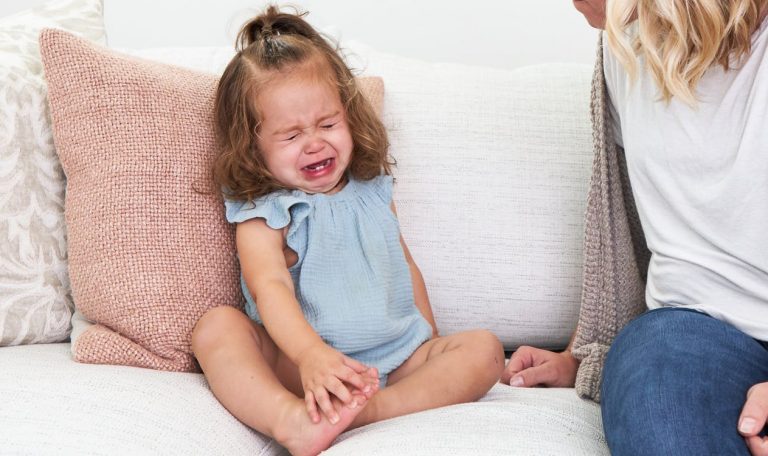
18 - 48 Months+
Toddlers and Their BIG Emotions
From the moment they're born, children need reassurances that a range of feelings is normal, and that emotions come and go.

28 - 30 Months
18 - 48 Months+
This classic “toy” unlocks so much development
Why are blocks so foundational to childhood? Block play supports language development, STEM concepts, visual spatial skills, and more.

18 - 48 Months+
How Eye Contact Affects Your Baby’s Brain Development
A study showed that babies' brains synch with their parents’ when they learn about their social environment. Read about how eye contact plays a crucial role in developing emotional connections.
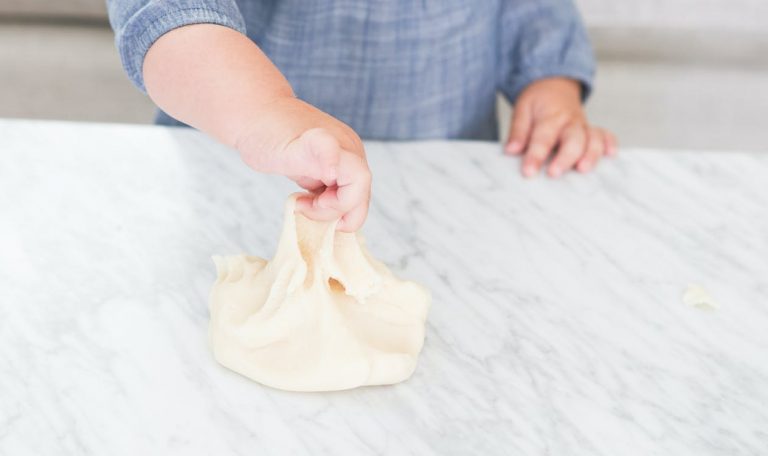
18 - 48 Months+
The Perfect Play Dough Recipe
Playdough is not only a fun and creative activity for kids, it also helps develop motor skills and finger strength. Follow our favorite homemade recipe.
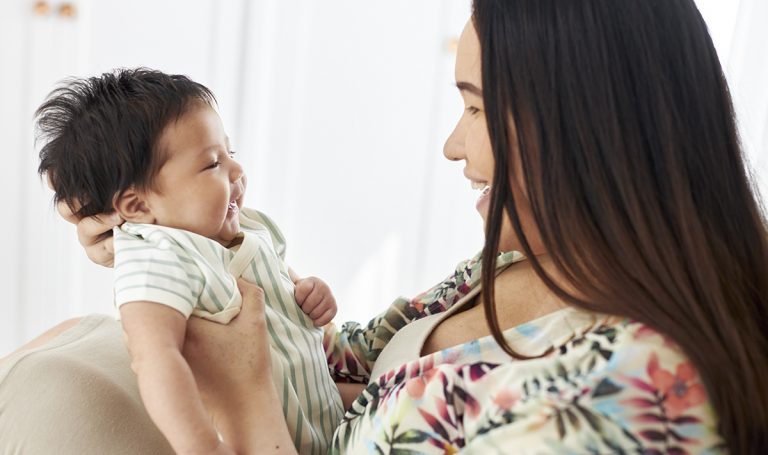
18 - 48 Months+
The Huge Impact Singing Has on Your Baby’s Brain
Experts have found that singing lowers your baby's heart rate, descreases anxiety, and releases endorphins.

18 - 48 Months+
When are children ready to share?
Learn the differences between turn-taking and sharing, and when children are ready for each.
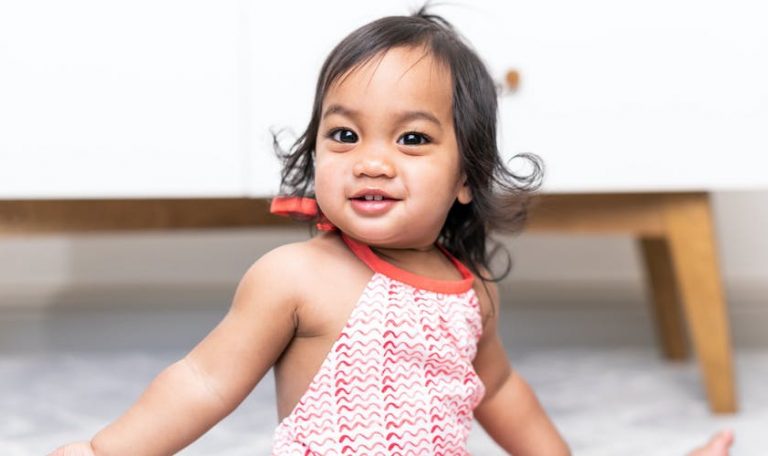
18 - 48 Months+
5 facts about toddlers to help you better understand yours
Your toddler is growing every day—physically, mentally, and emotionally. We gathered together five key facts to help you better understand your toddler and what's happening with their development right now.
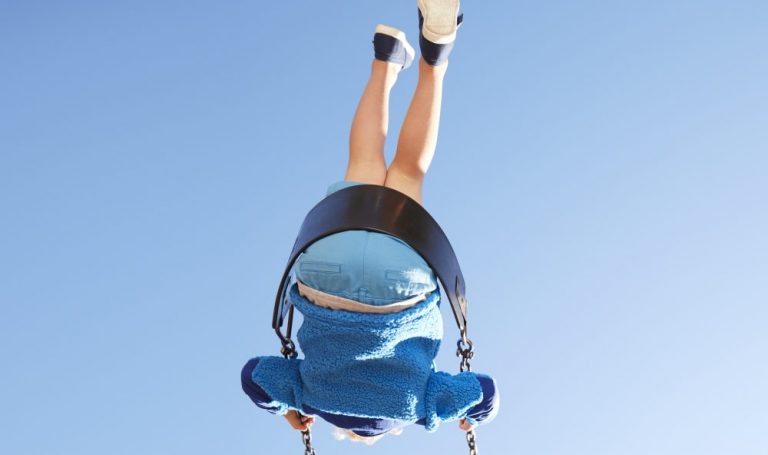
18 - 48 Months+
Why do children love feeling dizzy?
Spinning around and the resulting dizziness are significant tools children use to learn about their bodies. Learn more in our blog post.
